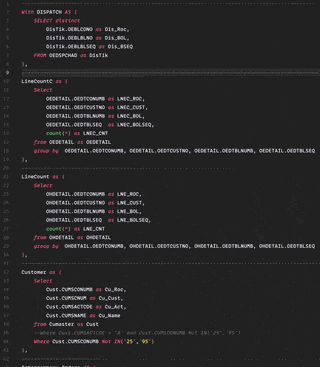Best Practices for Simplifying Complex SQL
How To Avoid Writing 5,000 Line Monsters
Hi, fellow future and current Data Leaders; Ben here 👋
Today, we will dig into an issue I have seen a lot. Those queries never seem to end.
You scroll and scroll, and yet they keep going!
Before we dive into the article, I’d also like to share about a free webinar I’ll be hosting alongside Richard Meng titled Unstructured Data, Structured Insights. If you want to learn more about going beyond chatbots to get value out of unstructured data, you won’t want to miss out!
I hope to see you there.
With that out of the way, let’s jump into it!
Intro
Maybe you’re luckier than me.
Maybe you’ve never opened a .sql file or an Airflow DAG only to be greeted by a 5,000+ line query—a true monster of a script that leaves you wondering where to begin.
I’ve seen plenty of these, and every time, I ask myself: Why in the world do these exist? And, more importantly, how can teams avoid them?
With tools like ChatGPT and Cursor making it easier than ever to generate SQL, I have a feeling we’ll see even more of these sprawling queries in the wild.
So, in this article, I’ll explore why massive SQL queries happen, why they’re a problem, and how you can break them down before they become unmanageable.
Why Should You Care?
Before we dive into why 5,000-line queries exist and how to avoid them, let’s talk about why they’re a problem in the first place.
Maintainability: Large queries are a nightmare to read, understand, and update. When a single SQL script stretches across thousands of lines, even the smallest tweak can have unintended consequences—turning debugging and refactoring into a frustrating game of whack-a-mole.
Data Quality: Ensuring data accuracy is already a challenge, but long analytical queries make it even harder. If bad data sneaks in—and if your query isn’t broken up—it might not fail until it’s well into the final 5,000-line query. Maybe you get lucky and catch it before production. If not? Good luck!
Where did it go wrong? The first CTE? The second subquery? The fifteenth case statement? If you’ve dealt with SQL error messages before, you know they don’t always tell you where to start looking. And it’s even worse when the query technically runs but spits out bad data.
Evolution Over Time: SQL queries rarely start as behemoths. They grow—new fields, conditions, joins, and business requirements pile on over time. Without proper modularization, a once-simple query can quickly balloon into thousands of lines, becoming an unmanageable, tangled mess.
Why Do 5,000-Line Queries Exist And How Can You Avoid It?
No, really—why do 5,000-line SQL queries exist?
Keep reading with a 7-day free trial
Subscribe to SeattleDataGuy’s Newsletter to keep reading this post and get 7 days of free access to the full post archives.



